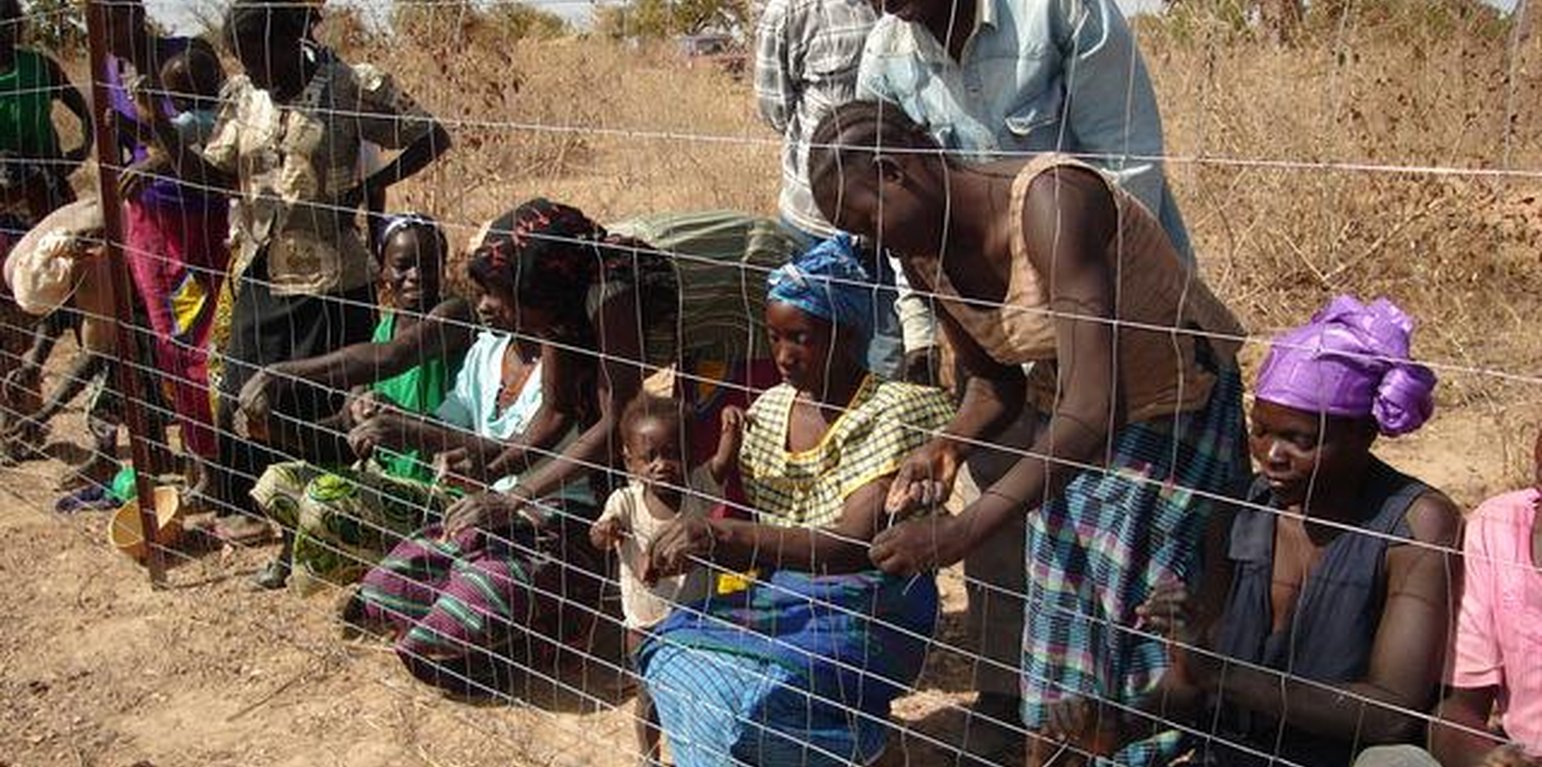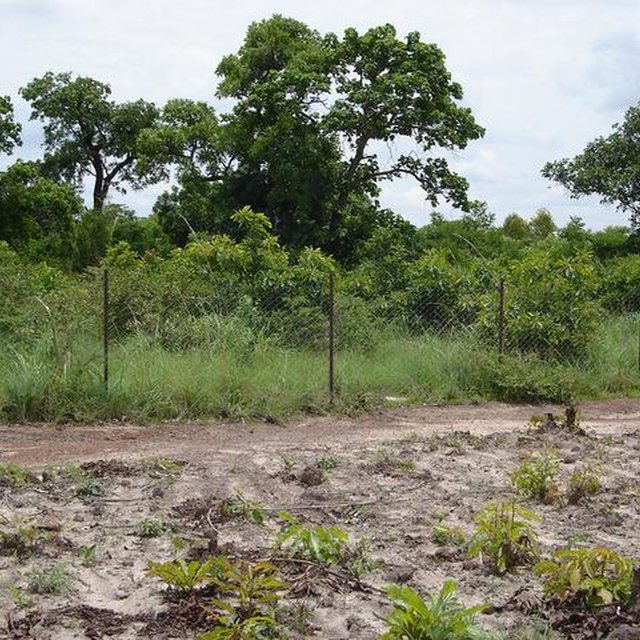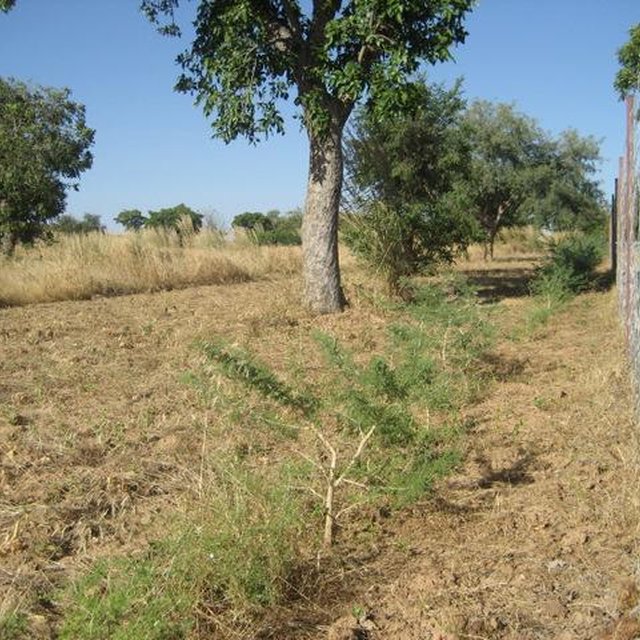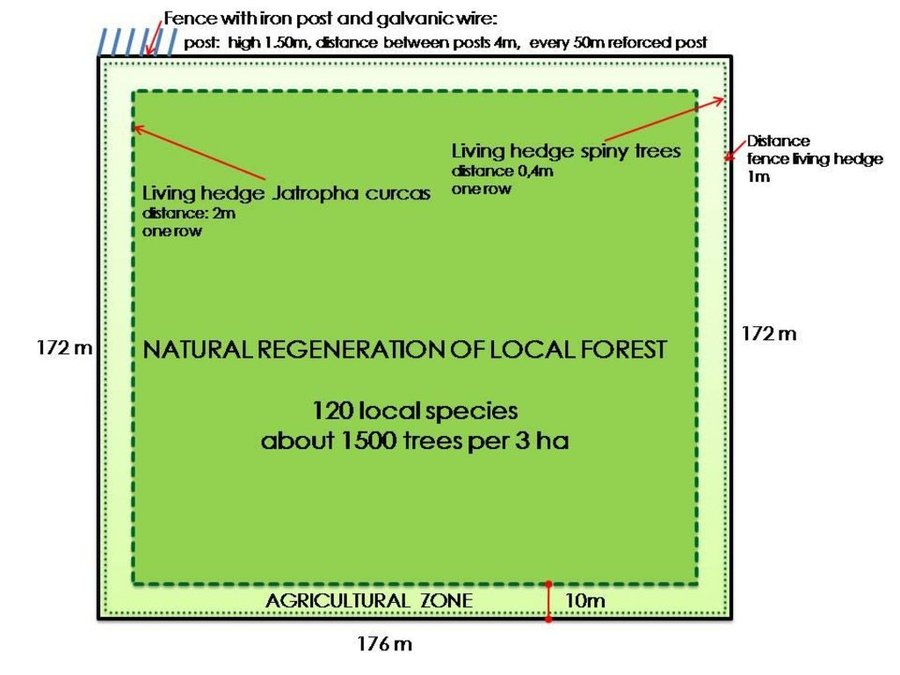



Assisted natural regeneration, as promoted by newTree in Burkina Faso, starts with enclosing 3 ha of degraded land with a solid fence. Fence materials (iron posts and galvanic wire) are externally sponsored and locally assembled and installed. Along the fence a dense living hedge of thorny trees (local tree species: e.g. Acacia nilotica, A. senegal, Prosopis sp, Ziziphus mauritiana) is planted. A strip of 10 m along the hedge is dedicated to agriculture. This area is equivalent to approximately 10% of the protected area. The rest is dedicated to natural regeneration of the local forest. Once protected, natural vegetation rich in endogenous species can actively regenerate. Annual vegetation species inventories are made to monitor the biomass, biodiversity and the growth rate of the trees. The forest reaches a tree density of approximately 500 trees per hectare and consists of around 120 local species. Some enrichment planting of rare species enhances the allotments. The protected area is of paramount importance for biodiversity conservation. Management activities in the protected area includes (1) seeding / planting of improved fodder species; and (2) establishing stone lines and half-moons (demi-lunes) for soil erosion control and water harvesting, (3) installing bee hives for honey production; and (4) fodder production: the grass is cut, tied and carried to feed livestock outside the regeneration area. Property rights for the protected area are clearly established through a contractual agreement that includes/respects traditional and government land rights. The local land users select the area, provide all labour inputs and ensure the long-term management of the sites according to mutually agreed goals. Training is provided to enhance income generating activities – ranging from beekeeping and the production of high-value vegetable crops to the processing of non timber forestry products – and to promote the use of fuel-efficient cooking stoves.
Location: Soum Province, Burkina Faso
No. of Technology sites analysed:
Spread of the Technology:
In a permanently protected area?:
Date of implementation: less than 10 years ago (recently)
Type of introduction












| Specify input | Unit | Quantity | Costs per Unit (n.a.) | Total costs per input (n.a.) | % of costs borne by land users |
| Labour | |||||
| Labour | ha | 1.0 | 1300.0 | 1300.0 | 33.0 |
| Equipment | |||||
| Tools | ha | 1.0 | 100.0 | 100.0 | 33.0 |
| Construction material | |||||
| Material for fence construction | ha | 1.0 | 2900.0 | 2900.0 | 33.0 |
| Other | |||||
| Training, seeds, compost | ha | 1.0 | 260.0 | 260.0 | 33.0 |
| Total costs for establishment of the Technology | 4'560.0 | ||||
| Total costs for establishment of the Technology in USD | 4'560.0 | ||||
| Specify input | Unit | Quantity | Costs per Unit (n.a.) | Total costs per input (n.a.) | % of costs borne by land users |
| Labour | |||||
| Labour | ha | 1.0 | 730.0 | 730.0 | 95.0 |
| Plant material | |||||
| Seedlings | ha | 1.0 | 40.0 | 40.0 | 95.0 |
| Other | |||||
| Training, seeds, compost | ha | 1.0 | 40.0 | 40.0 | 95.0 |
| Total costs for maintenance of the Technology | 810.0 | ||||
| Total costs for maintenance of the Technology in USD | 810.0 | ||||